Growing Onions.
Onions are indispensable in most kitchens. Sliced paper thin for salads, in chunks for stews or sautéd strips on top of a slice of calves liver, onions compliment almost every meal. An apple onion tart, sounds strange, but the flavors work well together. Try stuffing an onion with chopped bacon, jalapeños and cheddar, then smoking it. Wow! Thinly sliced rings, dredged in flour, salt & pepper and fried, are a gorgeous garnish for steaks, burgers and casseroles.
Most people think growing onions from sets is the way to go, but the opposite is preferable. When starting with sets, more green than bulb is produced. Heirloom onion seeds perform better, especially if you choose the right variety for your area.
There are three types of bulb onions; short day, intermediate day and long day. This refers to the length of daylight in your latitude. Northern areas are long day, southern areas like Texas are short day and Colorado would be intermediate. Short day onions require a long growing season. We grow nice short day onions here in Rocky Ford, Colorado because of the warm climate and extended growing season (Hardiness zone 5b). Intermediate day onions can be grown in most climates. Questions? Give us a call.
Onion seeds can be direct seeded in warm climates or started indoors in cool climates. Start onion seedlings inside 8 to 10 weeks before transplanting outside in cool climates (Zones 6 or lower). Sow seeds in pre-moistened potting soil 1/8″ deep. Press down lightly and keep evenly moist. Onion seeds take a while, so be patient. Trim seedlings to 3″ as they grow to keep them from getting top heavy and strengthen stems. Transplant 3 to 4 weeks before your last spring frost date. Space 3″ to 4″ apart, keep watered throughout the season. Direct seed onions in rows 1′ to 2′ apart. Thin to 3″ to 4″ apart when small. Green onion seeds should be planted or thinned to 1″ apart.
Good companion crops are beans, carrots, corn, cucumbers, eggplant, lettuce, radishes and spinach Bad companion crops are garlic and other onion varieties.
-
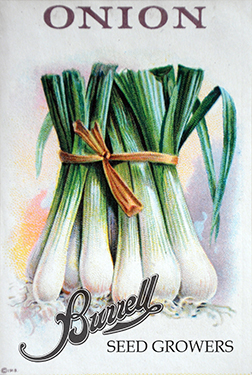
Onion – White Lisbon Bunching
$2.60 – $64.60 -

Onion – Tokyo Long White Bunching
$2.60 – $62.40 -

Onion – Evergreen Bunching
$2.60 – $62.40 -
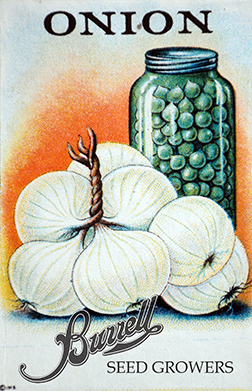
Onion – Crystal White Wax (Pearl)
$2.60 – $57.90 -

Onion – Southport White Globe
$2.60 – $55.70 -
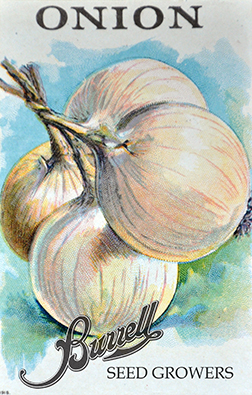
Onion – Ringmaster
$2.60 – $89.00 -
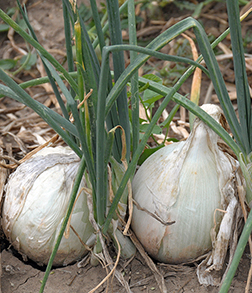
Onion – Blanco Duro
$2.60 – $66.80 -
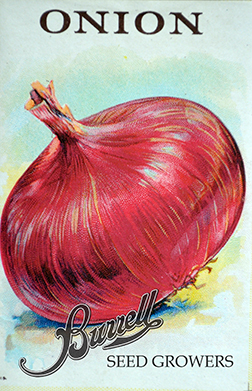
Onion – Red Burgundy
$2.60 – $71.20 -

Onion – Violet De Galmi Red
$2.60 – $47.70 -
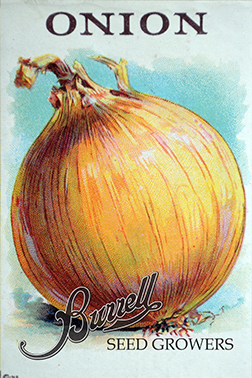
Onion – Texas Grano 502
$2.60 – $60.10 -

Onion – Texas Grano 1015Y
$2.60 – $82.40 -
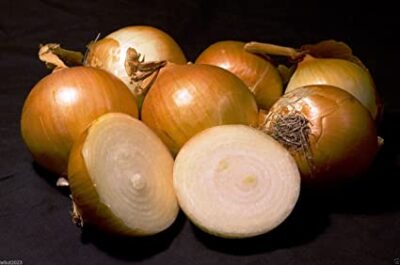
Onion – Sweet Spanish Utah
$2.60 – $86.20
-

Onion – White Lisbon Bunching
$2.60 – $64.60 -

Onion – Tokyo Long White Bunching
$2.60 – $62.40 -

Onion – Evergreen Bunching
$2.60 – $62.40 -

Onion – Crystal White Wax (Pearl)
$2.60 – $57.90 -

Onion – Southport White Globe
$2.60 – $55.70 -

Onion – Ringmaster
$2.60 – $89.00 -

Onion – Blanco Duro
$2.60 – $66.80 -

Onion – Red Burgundy
$2.60 – $71.20 -

Onion – Violet De Galmi Red
$2.60 – $47.70 -

Onion – Texas Grano 502
$2.60 – $60.10 -

Onion – Texas Grano 1015Y
$2.60 – $82.40 -

Onion – Sweet Spanish Utah
$2.60 – $86.20
Growing Onions.
Onions are indispensable in most kitchens. Sliced paper thin for salads, in chunks for stews or sautéd strips on top of a slice of calves liver, onions compliment almost every meal. An apple onion tart, sounds strange, but the flavors work well together. Try stuffing an onion with chopped bacon, jalapeños and cheddar, then smoking it. Wow! Thinly sliced rings, dredged in flour, salt & pepper and fried, are a gorgeous garnish for steaks, burgers and casseroles.
Most people think growing onions from sets is the way to go, but the opposite is preferable. When starting with sets, more green than bulb is produced. Heirloom onion seeds perform better, especially if you choose the right variety for your area.
There are three types of bulb onions; short day, intermediate day and long day. This refers to the length of daylight in your latitude. Northern areas are long day, southern areas like Texas are short day and Colorado would be intermediate. Short day onions require a long growing season. We grow nice short day onions here in Rocky Ford, Colorado because of the warm climate and extended growing season (Hardiness zone 5b). Intermediate day onions can be grown in most climates. Questions? Give us a call.
Onion seeds can be direct seeded in warm climates or started indoors in cool climates. Start onion seedlings inside 8 to 10 weeks before transplanting outside in cool climates (Zones 6 or lower). Sow seeds in pre-moistened potting soil 1/8″ deep. Press down lightly and keep evenly moist. Onion seeds take a while, so be patient. Trim seedlings to 3″ as they grow to keep them from getting top heavy and strengthen stems. Transplant 3 to 4 weeks before your last spring frost date. Space 3″ to 4″ apart, keep watered throughout the season. Direct seed onions in rows 1′ to 2′ apart. Thin to 3″ to 4″ apart when small. Green onion seeds should be planted or thinned to 1″ apart.
Good companion crops are beans, carrots, corn, cucumbers, eggplant, lettuce, radishes and spinach Bad companion crops are garlic and other onion varieties.

